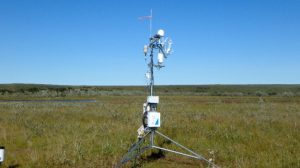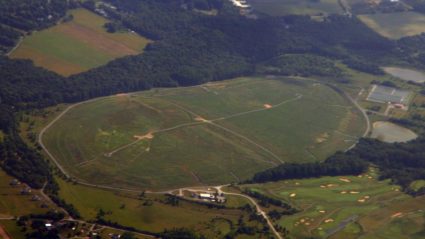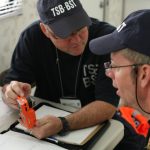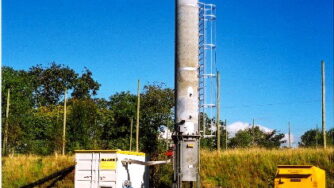 The investigation of the extent and source of landfill gas migration, is the first step in landfill gas migration control, and may need to take the path which follows:
The investigation of the extent and source of landfill gas migration, is the first step in landfill gas migration control, and may need to take the path which follows:
- to identify the source of the gas;
- to identify the migration pathway;
- to understand the mechanisms causing the migration;
This is essential for the engineers and technicians involved to design and construct long-term landfill gas migration control systems.
What is Landfill Gas Migration?
Landfill gas migration is a complex process of the gas moving from the site of original deposition to other places via diffusion. Usually, the gas moves from areas of high concentration to areas of low gas concentration around a landfill. The process is also affected by the permeability of the ground and other factors, such as pressure differences in the soil, cavities, pipes, and tunnels. Changes in atmospheric pressure and the water table can encourage this migration. via Wikipedia
Ultimately, we shall assume that for Landfill Gas Migration Control a single objective exists which is to prevent landfill gas from migrating out of the landfill site, and the methods by which this is done may include the following techniques:
Soil Probe Tests
Gas conditions in the soil around the landfill site can be investigated by soil probe monitoring. This technique involves manually driving a hollow probe into the ground, typically to a depth of about 0.5 metres, and withdrawing a sample of gas into a portable infrared absorption gas analyser (or similar device) to measure the concentrations of oxygen, carbon dioxide and methane.

This method of landfill gas migration control testing is usually carried out as there may be other sources of the methane detected and before any money is spent it must be established for certain that the landfill is indeed responsible. Other factors can easily cause the presence of methane, not least a local natural gas grid pipeline, which might possibly be leaking and therefore the source of the gas.
This method of investigation has limitations and may yield inconclusive results due to the fact that relative concentrations of the gases, at shallow depths, change according to the weather conditions before and during the period of monitoring. Results must therefore be treated with caution. Nevertheless, it may work well in many situations and worthwhile results are then obtained, but the proviso is that a number of surveys need to be carried out, over a period ot time, to determine the effect of different weather conditions.
The results of the soil probe surveys may identify some persistent areas with high methane and carbon dioxide and low oxygen concentrations but these are at times surrounded by extensive areas in which soil gas concentrations are normal.
This can occur when the principal zone of migration is at depth and the geology present provides only limited vertical pathways which allow the gas to migrate to the surface. This may sometimes be confirmed by evidence from the borehole gas quality monitoring which may find widespread very high concentrations of methane and carbon dioxide in an unsaturated zone or bed(s).
Soil probe testing is quite common as the first stage in projects seeking to introduce landfill gas migration control.
Dissolved Methane Tests in Groundwater
As landfill gas migration may take place to an extent in the flow of groundwater, it may be necessary to collect groundwater samples from boreholes between the landfill site and the house and to analyse them for dissolved methane.
If dissolved methane is present, the concentrations need to be considered and a calculation completed based upon the flux of the groundwater. This is done to show that the migration of landfill gas, either is, or is not, too low to account for the gas concentrations measured in the migration zone. This often needs to be established as an early step towards landfill gas migration control.
Borehole Investigations

A number of boreholes will usually already exist around the periphery of a landfill. These are drilled principally for long term monitoring of groundwater quality. If these have perforated well screens , they may be adapted for gas migration monitoring. Other boreholes may need to be drilled specifically for the investigation but the landfill gas expert will also seek to maximize use of existing monitoring wells in any project to achieve landfill gas migration control.
Gas Monitoring in Boreholes
Gas analysis
The gas samples obtained by monitoring will need to be analysed for ethane, propane, butane, isobutane and carbon monoxide, as well as oxygen, methane, carbon dioxide and nitrogen to identify the source beyond reasonable doubt. The concentrations of ethane, propane, etc should be very low to be typical of landfill gas rather than mains gas or natural gas. The concentration of carbon monoxide will be a guide to showing that combustion is either likely, or is not likely, to be occurring at the source of the gas.
Pneumatic Permeability Packer Tests
Double pneumatic permeability packer tests may need to be carried out on chosen boreholes. In the past this was done using the recognised method in the British Standard BS5930. Water is pumped into the boreholes after inflation of the packers but, even at full flow, there may still be no return and no pressure developed if a significant gas migration void exists below the ground. For example, zones of very high permeability may be present due to open fissures which need to be known about before accomplishing landfill gas migration control.
Gas Pumping Trials
Gas pumping trials may be carried out on several boreholes to identify flow patterns where ground conditions show a variable geology which is hard to model mathematically, or voids below ground are suspected to exist. During the pumping trials landfill gas is pumped from a test area. And, pumping for four days (allowing recharge over night) is not uncommon when operators badly need to bring about full landfill gas migration control.

Gas pumping trials may result in increased concentrations of methane and carbon dioxide at some monitoring boreholes, which should be interpreted as a guide to the likely flow patterns below ground.
Remote Sensing for Landfill Gas Migration Control
There are three methods which can be used for remote sensing of landfill gas migration from afar. These are:
- true colour aerial photographs
- false colour infra-red photographs
- aerial thermography.
True Colour Arial Photographs
Gross migration of landfill gas will cause the vegetation to die in the effected ground. Any good quality aerial photograph can be used to look for this effect and if the photographs are taken over a period of time the die-back area may be seen to extend or contract, which can be useful data as well. It may be advisable to employ a specialist aerial photographer to fly a balloon or by another method to obtain good quality images.
False Colour Infra-Red Photographs
False colour infra-red can provide good data on the extent and seriousness of landfill gas migration. Where gas is rising up and being emitted from the surface in cool climates, it will often show up as hot areas or hotspots.
Aerial Thermography
The extent of migration of landfill gas has also been successfully monitored from above, by aerial thermography.

If you have a landfill gas migration control or related problem and need consultancy assistance to investigate the problem and would like professional advice, contact us with details and we will reply, and as appropriate, provide a free proposal and a quotation for solving your problem.
In this article we have discussed testing methods for understanding landfill gas migration at any landfill, and the attainment of good landfill gas migration control, starting with good practice in landfill gas migration monitoring. This includes our articles about potential effects of landfill gas migration on groundwater, plus ideas on landfill gas migration distance travelled, and landfill gas migration pressure/ pumping trials. Landfill gas migration modeling is also often used in studying landfill gas migration, plus we also have an article for you on this subject on this website about the historic Loscoe landfill gas migration explosion incident. All of this, we hope, will add to your understanding of the requirements for achieving proper landfill gas migration control.
Landfill Gas Monitoring Procedures Methods and Guide
Landfill gas (LFG) monitoring procedures involve routine, site-specific procedures to detect gas leaks and ensure operational compliance, including monitoring methane, carbon dioxide, and other trace gases using portable instruments and fixed systems. Read on for our explanation of good practice procedures that include wellhead monitoring for oxygen, nitrogen, and carbon monoxide, perimeter monitoring for ambient […]
Best Portable Landfill Gas Analyzer Reviews & Comparison
Landfill gas monitoring is critical for health, safety, and compliance. A top-notch portable analyzer detects harmful gases in real-time, safeguarding workers and the environment. As regulations tighten, reliable equipment becomes essential for avoiding fines and mitigating risks associated with gas emissions from decomposing waste…
Why Do Landfill Gas Monitoring in Soil, the Air, Near the Surface, & In Confined Spaces
Landfill gas monitoring is critical for preventing health risks and hazards near landfill sites. Detecting gases like methane, which is flammable and a climate change contributor, is essential. Effective monitoring employs soil, air, and emissions techniques to ensure safety and environmental protection…
Landfill Gas Monitoring Equipment
The choice of landfill gas monitoring equipment for modern landfills is wider than ever before. Types of Landfill Gas Monitoring Equipment Wikipedia provides a detailed explanation of the different types of landfill, gas monitoring, each of which demands it's own equipment to perform: Surface Monitoring For surface monitoring, a monitor may be either: Single reading […]








